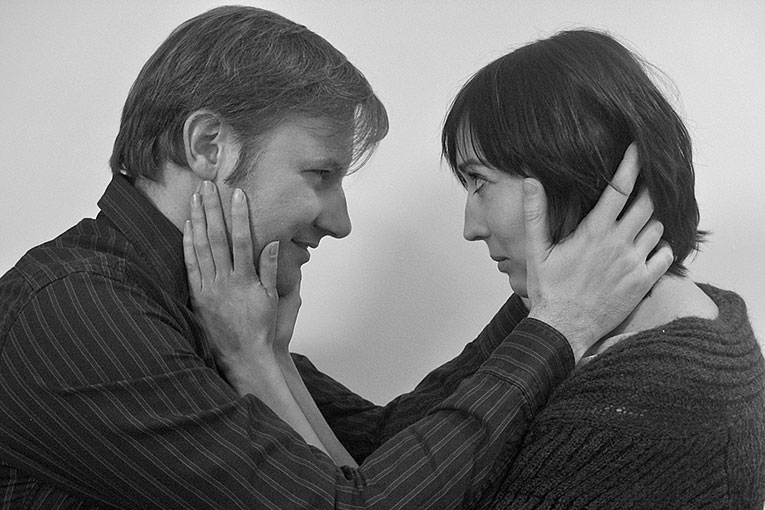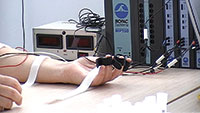
| Identifying markers of psychobiological predisposition to violence opens the door to prevention and intervention in the field of male violence against women. Currently, we have no effective drugs to treat abusers of women, but the development of psychotherapeutic intervention programmes and neuropsychological rehabilitation mark a promising path.
Keywords: hormones, psychobiology, neuroscience, violence against women.. The figures of women murdered by their partners are startling (World Health Organization, 2011), so gender violence has become an issue of public health relevance. Much of current research in this field has focused on the study of the consequences of violence on the health of the victims. However, which kind of men are punished because of domestic violence against women, the factors that enable those violent acts or the psychotherapeutic and neuropsychological interventions that allow for an effective treatment towards reintegration have not received the same attention. The profile of offenders is well described by social and personality psychology. Some features such as high emotional dependency and low self-esteem and social assertiveness have been pointed out. In addition, they often present hostile cognitive schemas such as degrading and sexist attitudes toward women, together with inadequate feelings toward themselves and their partners, resulting in pathological jealousy. This leads to an inability to resolve conflicts through mature mechanisms like negotiation or empathetic cooperation, thus triggering violence (Farrell, 2011). Psychobiological research of abusers is almost nonexistent, greatly hindering the formulation of initial hypotheses. The study of these variables will optimise and improve the limited effectiveness of current therapies (Echeburúa-Odriozola et al., 2010). But not all offenders are alike in personality, cognitive schemas, psychosocial and cultural variables and, by extension, in biological characteristics that predispose them to violence. In this sense, they have been classified into two categories according to their sympathetic reactivity (the nerves that prepare us for action) to stress or psychophysiological predisposition to cope with it. Type I individuals act with premeditation and tend to show a low arousal or behavioural reaction to alerts or attention to the appearance of a stimulus to cope with stress, and tend to show more proactive violence. On the other hand, type II (the object of our investigation) react with violence impulsively and are more physiologically activated before the stressor or any stimulus that produces an imbalance in the body appears (Gottman et al., 1995). The lack of jobs with a comprehensive perspective on the study of abusers and violence and empathy led us to venture and gather as much data as possible to develop the appropriate research methodology to allow us to analyse the psychobiological response of impulsive abusers (pre-selected based on their psychological and criminological profile). We designed a specific laboratory situation that would stress this population and, therefore, raise a stress response. To this end, they had to speak in front of evaluators (with gender parity) about the law against on gender violence and their particular situation after being accused by their former partners. Furthermore, they were questioned to elicit an emotional reaction to issues related to the law on gender violence and its perception as fair or unfair. Hormonal, immunological, psychophysiological (electrodermal activity and heart rate), psychological and neuropsychological variables were registered during the whole situation to see how they prepare, how they respond and how they return to normal. In this study we have found that, when coping with stress, there is less production of the main hormone that is related to it, cortisone (product of the hypothalamic-pituitary-adrenal axis). This hormone acts as a brake on the hypothalamic-pituitary-gonadal axis and thus decreases the production of testosterone, the hormone that facilitates the expression of violence (Terburg et al., 2009). Traditionally, testosterone was thought to be a cause of violence. However, it is now seen as a modulator factor, the increase of which appears to increase the likelihood of behaving violently (Moya-Albiol, 2010). This modulation may occur and affect different cognitive abilities that alter information processing. Furthermore, this increase in testosterone seems to produce a temporary worsening of cognitive empathy and negative affect, i.e. the ability to take the mental distance to understand the thoughts and feelings of others decreases and negative emotions like anxiety, anger and moodiness increase (Romero-Martínez, Lila, Sariñana-González et al., 2013). Thus, the abusers appear to have temporary difficulty to take the place of the victims and so they get carried away by anger. Therefore, we conclude that an imbalance between testosterone and cortisone predisposes to violence, and the ratio between the two hormones (testosterone-cortisol ratio) can be a valid indicator of violent men or impulsive abusers (Romero-Martínez, González-Bono et al., 2013). |
«The profile of offenders presents a high emotional dependency and low self-esteem and social assertiveness as features»
«By inflicting violence against their partners, abusers get a sense of power that reinforces their health» «Traditionally, testosterone was thought to be a cause of violence. However, it is now seen as a modulator factor» |
|
 Denis Zamaro Denis Zamaro |
||
|
Impulsiveness can be detected by skin conductance, marker of the autonomic nervous system (Gottman et al., 1995). Impulsive abusers present electrodermal hyperreactivity, i.e., a greater increase in skin conductance before the stressful stimulus appears (Babcock et al., 2005). Therefore, the abusers are prepared before the threat is present, or they remain in a state of high alert, which lowers the threshold to display violence. In addition, they maintain activation after being questioned about domestic violence (opinions and personal experience) (Romero-Martínez, Lila, Williams et al., 2013). In this respect, the study of cardiovascular measurements revealed that these offenders have predominance of sympathetic over parasympathetic nervous system in stress response related to violence. Therefore, we conclude that they showed deficits in emotional regulation, so the threshold for violence is lowered. Furthermore, increases in vigilance or general body activation (defined in terms of increased cardiovascular and electrodermal response to stress) appear to be related to experienced increases in testosterone levels (Romero-Martínez, Lila, Williams et al., 2013). Furthermore, this hypervigilance or excessive general activation of the body can improve their immune ability (measured by the response of a type of substance that is in saliva, tears, and breast milk, known as immunoglobulin A, which defends us from external aggressions from substances that may be harmful to our body) in front of the aforementioned stressful task, as well as their self-esteem and, in general, their health status (Romero-Martínez et al., 2014). Does that mean that offenders behave violently because the expression of violence improves their health and psychological state? We cannot answer that sharply. Moreover, it is important to highlight the role of personality as changes occur only in offenders with low self-esteem, signs of psychopathology and high cognitive rigidity. They also have limited empathic qualities, leading to a restricted ability to put themselves in the place of the other (Romero-Martínez, Lila, Sariñana-González et al., 2013). On the contrary, violence could have negative consequences for the immunity and health of men with no history of abuse or violence (Martínez-Romero et al., 2014). Therefore, we conclude that, by inflicting violence against their partners, abusers get a sense of power that reinforces their health. However, why do they use violence specifically against their partners? We worked with the hypothesis that low self-esteem makes them show violence only toward their partners (and sometimes also their offspring), after a long process in which they have marked their power and dominion over the victims, since they feel inferior to others outside this context. Are there aspects of their childhood that predispose them to an excessive use of force and to perpetuate the so-called cycle of violence? To answer this question, a retrospective study would be necessary. We observed in the data we collected that the presence of maltreatment during childhood increased the probability of alcohol dependence in adulthood, a characteristic that facilitates the expression of anger (Romero-Martínez, Lila, Catalá-Miñana et al., 2013). Alcohol consumption produces significant deficits in several cognitive abilities, especially in cognitive flexibility and empathy, i.e. the skills to present a socially acceptable behaviour (Romero-Martínez and Moya-Albiol, 2013). However, other prenatal factors such as excessive exposure to testosterone before birth can decrease the ability to empathise and can facilitate the emergence of violence. As a result of this exposure, they would have an overly male brain with a poor emotional system. In addition, androgens may be partly responsible for excessive impulsivity, which can also lead to less impulse control marked by the emergence of violence and alcohol consumption. Therefore, influences in the early stages of life are critical for violence and empathy in adulthood. Their brain might be predisposed to violence, and along with alcohol and substance abuse, this may lower impulse control, facilitating violence against women. A high percentage of batterers abuse or depend on alcohol or other drugs. In addition, alcoholic abusers are probably the most violent. Although the rest of abusers do not abuse these substances, they may commit the violent act under their effects. Chronic use of the substance has been associated with deficits in different cognitive skills, such as working memory, attention and verbal learning, decision-making, verbal skills and long-term memory (Romero-Martínez and Moya-Albiol, 2013). Of all the deficits found in alcoholics, the ones that have been studied more extensively are the executive function or the set of cognitive skills that help us to plan and implement the behaviour and memory, mainly because of their greater vulnerability to the toxic effects of alcohol, but also because of the importance they have for social adequacy, disease prognosis and subjective complaints by the patients themselves, whose life is severely hampered by poor decisions. Yet, as we have explained above, there are abusers who do not present chronic alcohol consumption; therefore, they do not have these deficits and the manifestation of violent behaviour has another explanation. The perpetration of violent acts under the influence of alcohol or because of acute consumption could be explained by the hypothesis of the Alcohol Myopia Model (AMM), which states that alcohol impairs attention-dependent cognitive processing (Giancola et al., 2011). The perception of external and internal information is restricted in these two ways to focus conscious perception on a small number of salient stimuli, thereby increasing the likelihood of reacting violently when a piece of information is neglected. As scientists and humanistic psychologists, we are reluctant to accept that these people have no chance to recover and redirect their aggression. Despite having a limited capacity to put themselves in the place of the other, reactive/impulsive abusers are capable of feeling remorse and apologising for what they have done (in most cases), that is, they have emotional empathy. Therefore, it is important to work on empathy to break the cycle of violence. Their violence could be a continuation of their experience as victims during childhood. As a result, they developed a limited emotional system. It is very important that future research takes into account these aspects because gender violence is more than sexist men perpetuating patriarchal values. Through our studies we realise that abusers have poor emotional regulation, both at the biological and psychological level, so it is important to work with emotional decoding (to avoid misinterpreting emotions and triggering violent responses). Also relevant is intervening in the neuropsychological deficits, as they would hinder the benefits of psychological therapies, as well as the treatment of alcohol dependence, which is essential for the perpetration and perpetuation of violence. Neuroimaging studies, based on taking pictures of the human brain during different tasks and obtaining images that show the activation of different parts of the brain, can supplement the data obtained by the different variables mentioned, thus enriching the results obtained. At present, there are no effective drugs for the treatment of violence against women, but the development of psychotherapeutic intervention and neuropsychological rehabilitation programmes indicates a path of hope. Considering markers of psychobiological predisposition to violence in such abusers opens a door to prevention and intervention in the field of violence against women. |
 Research team of Professor Luis Moya Albiol Research team of Professor Luis Moya Albiol
«Abusers are prepared before the threat is present or they remain in a state of high alert, which lowers the threshold to display violence» «Abusers have poor emotional regulation, both at the biological and psychological level, so it is important to work the with emotional decoding» |
|
REFERENCES
Babcock, J. C.; Green, C. E.; Webb, S. A. and T. P. Yerington, 2005. «Psychophysiological Profiles of Batterers: Autonomic Emotional Reactivity as It Predicts the Antisocial Spectrum of Behavior among Intimate Partner Abusers». Journal of Abnormal Psychology, 114(3): 444-455. DOI: <10.1037/0021-843X.114.3.444>.
Echeburúa-Odriozola, E.; Sarasua-Sanz, B.; Zubizarreta-Anguera, I.; Amor-Andrés, P. J. and P. De Corral-Gargallo, 2010. «Variables predictoras del rechazo, abandono y fracaso terapéutico en hombres violentos contra su pareja tratados psicológicamente en un marco comunitario». International Journal of Clinical and Health Psychology, 10: 403-420.
Farrell, H. M., 2011. «Batterers: a Review of Violence and Risk Assessment Tools». Journal of the American Academy of Psychiatry and the Law, 39: 562-574.
Giancola, P. R.; Duke, A. A. and K. Z. Ritz, 2011. «Alcohol, Violence, and the Alcohol Myopia Model: Preliminary Findings and Implications for Prevention». Addictive Behaviors, 36: 1019-1022. DOI: <10.1016/j.addbeh.2011.05.006>.
Gottman, J. M.; Jacobson, N. S.; Rushe, R. H. and J. W. Shortt, 1995. «The Relationship between Heart Rate Reactivity, Emotionally Aggressive Behavior and General Violence in Batterers». Journal of Family Psychology, 9: 227-248.
Moya-Albiol, L., 2010. Psicobiología de la violencia. Pirámide. Madrid.
Romero-Martínez, A.; González-Bono, E.; Lila, M. and L. Moya-Albiol, 2013a. «Testosterone/Cortisol Ratio in Response to Acute Stress: A Possible Marker of Risk for Marital Violence». Social Neuroscience, 8(3): 240-247. DOI: <10.1080/17470919.2013.772072>.
Romero-Martínez, A.; Lila, M.; Catalá-Miñana, A.; Williams, R. K. and L. Moya-Albiol, 2013b. «The Contribution of Childhood Abuse and Early Androgen Exposure to Impairments in Socio-cognitive Skills in Intimate Partner Violence Perpetrators with High Alcohol Consumption». International Journal of Environmental Research and Public Health, 10(8): 3753-3770. DOI: <10.3390/ijerph10083753>.
Romero-Martínez, A.; Lila, M.; Sariñana-González, P.; González-Bono, E. and L. Moya-Albiol, 2013c. «High Testosterone Levels and Sensitivity to Acute Stress in Perpetrators of Domestic Violence with Low Cognitive Flexibility and Impairments in Their Emotional Decoding Process: A Preliminary Study». Aggressive Behavior, 39(5): 355-369. DOI: <10.1002/ab.21490>.
Romero-Martínez, A.; Lila, M.; Williams, R. K.; González-Bono, E. and L. Moya-Albiol, 2013d. «Skin Conductance Rises in Preparation and Recovery to Psychosocial Stress are Related to Impulsivity and Testosterone in Intimate Partner Violence Perpetrators». International Journal of Psychophysiology, 90(3): 329-333. DOI: <10.1016/j.ijpsycho.2013.10.003>.
Romero-Martínez, A. and L. Moya-Albiol, 2013. «Neuropsychology of Perpetrators of Domestic Violence: The Role of Traumatic Brain Injury and Alcohol Abuse and/or Dependence». Revista de Neurología, 57(11): 515-522.
Romero-Martínez, A.; Lila, M.; Conchell, R.; González-Bono, E. and L. Moya-Albiol, 2014. «Immunoglobulin A Response to Acute Stress in Intimate Partner Violence Perpetrators: The Role of Anger Expression-out and Testosterone». Biological Psychology, 96: 66-71. DOI: <10.1016/j.biopsycho.2013.11.009>.
Terburg, D.; Morgan, B. and J. van Honk, 2009. «The Testosterone–cortisol Ratio: A Hormonal Marker for Proneness to Social Aggression». International Journal of Law and Psychiatry, 32(4), 216-223. DOI: <10.1016/
j.ijlp.2009.04.008>.
World Health Organization, 2011. Multi-country Study on Women’s Health and Domestic Violence Progress Report. OMS. Geneva.








